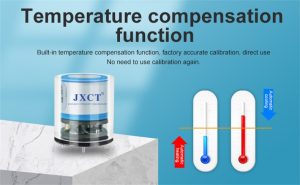Creating a safe work environment is a top priority for employers across various industries. One of the critical aspects of workplace safety is monitoring and managing gas emissions and potential hazards. Gas sensing technology has emerged as a powerful tool for enhancing workplace safety by detecting, monitoring, and alerting to the presence of hazardous gases. This article explores the benefits of gas sensing technology in ensuring workplace safety, its applications, and the potential impact on employee well-being and productivity.
Understanding Gas Sensing Technology:
Gas sensing technology involves the use of specialized sensors to detect and measure the concentration of specific gases in the air. These sensors are designed to identify hazardous gases such as carbon monoxide (CO), hydrogen sulfide (H2S), methane (CH4), ammonia (NH3), and other volatile organic compounds (VOCs). Gas sensing technology utilizes various methods, including electrochemical, catalytic, infrared, and semiconductor sensors, to accurately detect and quantify gas concentrations in real-time.
Early Detection and Alarm Systems:
One of the significant advantages of gas sensing technology is its ability to provide early detection of hazardous gases in the workplace. By continuously monitoring the air quality, gas sensors can promptly detect the presence of harmful gases and trigger alarm systems. This early warning allows workers to evacuate the area or take appropriate measures to mitigate the risk, minimizing the potential for accidents, injuries, and health complications.
Indoor Air Quality Monitoring:
Workplaces can experience poor indoor air quality due to factors like inadequate ventilation, emissions from chemicals or machinery, and enclosed spaces. Gas sensing technology enables continuous monitoring of indoor air quality, ensuring a safe and healthy working environment. Sensors can detect elevated levels of carbon dioxide (CO2), volatile organic compounds (VOCs), or other contaminants, prompting employers to take corrective actions, such as improving ventilation systems or addressing potential pollution sources.
Hazardous Gas Leak Detection:
Certain industries, such as manufacturing, chemical processing, and oil refineries, have a higher risk of hazardous gas leaks. Gas sensing technology provides an effective means of detecting and monitoring gas leaks in real-time. By deploying gas sensors strategically throughout the workplace, companies can detect gas leaks at their earliest stages, minimizing the risk of explosions, fires, or chemical exposures. Early detection allows for the swift implementation of emergency response protocols to safeguard employees and mitigate potential damage.
Personal Gas Monitoring:
In environments where employees are exposed to potentially harmful gases directly, personal gas monitoring devices can be utilized. These portable gas sensors can be worn by workers to continuously monitor the air quality in their immediate surroundings. Personal gas monitors provide real-time feedback and alerts if hazardous gas concentrations exceed safe limits. This empowers employees to take necessary precautions and avoid dangerous situations, ensuring their safety while performing their duties.
Compliance with Safety Regulations:
Workplace safety is governed by regulations and standards set by occupational health and safety authorities. Gas sensing technology plays a vital role in helping companies meet these safety requirements. By implementing gas sensors and monitoring systems, employers can demonstrate compliance with safety regulations, ensuring a safe working environment for their employees. Furthermore, regular maintenance and calibration of gas sensing equipment help maintain accurate and reliable readings, crucial for regulatory compliance.
Employee Well-being and Productivity:
A safe work environment not only protects employees from potential hazards but also contributes to their well-being and productivity. By utilizing gas sensing technology, organizations show a commitment to employee safety, instilling a sense of confidence and trust among workers. Employees feel valued and supported, leading to increased job satisfaction and productivity. Additionally, an accident-free workplace reduces absenteeism due to illness or injuries, ensuring continuous operations and business success.
Conclusion:
Gas sensing technology has revolutionized workplace safety by providing early detection and continuous monitoring of hazardous gases. Its applications in indoor air quality monitoring, gas leak detection, personal gas monitoring, and regulatory compliance offer numerous benefits to employers and employees alike. By utilizing gas sensing technology, companies can create a safe work environment, reduce the risk of accidents and health issues, and enhance employee well-being and productivity. Ongoing advancements in gas sensor technology will continue to drive workplace safety improvements, ensuring that orga
 : +86 155 8830 2704
: +86 155 8830 2704 : jxdziot@gmail.com
: jxdziot@gmail.com
